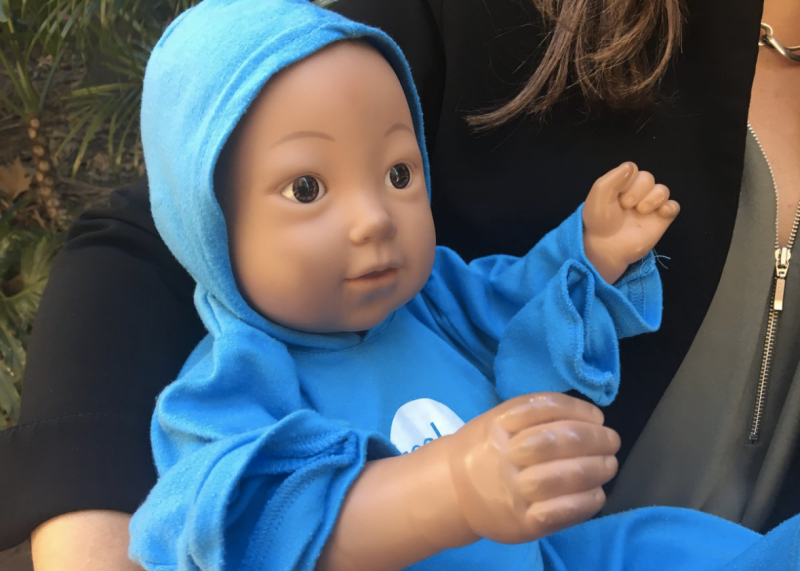
Babies can be a drag. Their utter helplessness and disappointing lack of communication skills often leave new parents sleep-deprived and playing frantic guessing games amid ear-piercing cries (mostly from the baby). Such exhausting pains of parenthood should be enough to deter any unprepared teen from getting frisky too early—or so the makers of an infant simulator called “Baby Think It Over” seemed to think. But those makers may have their own reconsidering to do.
The life-like dolls are needy and a bit creepy to boot, but completely lousy at deterring teens from getting pregnant, according to the first randomized, controlled trial on the popular sex education tool. In fact, the study, involving more than 2,800 Australian girls between the ages of 13 and 15, actually hinted that the dolls may increase the risk of teen pregnancy.
Of the 1,267 teens that had to care for, burp, change, and feed the robot babies over a weekend, 17 percent (or 210 girls) had at least one pregnancy by the age of 20. That’s a slight jump from the pregnancy rate of the 1,567 girls in the control group who received a standard school curriculum on sex education and parenting. Their pregnancy rate was just 11 percent (or 168 girls).
Whether that increased pregnancy rate would bear out in larger trials is unclear, but one thing is pretty plain: the bot babies certainly didn’t lower teen pregnancies, as maker RealityWorks, based in Wisconsin, suggests. The study results should prompt a rethink by educators and health professional because the droid infants are currently used widely in schools, churches, and community groups in 89 nations—mostly high-income ones, but also low- and middle-income. RealityWorks claims that 67 percent of US school districts use the high-tech dolls.
“Despite the theoretical rationale for possible effectiveness, the claims of the company, and benefits cited in descriptive studies, our results suggest that the use of infant simulators in schools does not have the desired long-term effect of reducing teenage pregnancy, and is likely to be an ineffective use of public resources aimed at pregnancy prevention,” the study authors, led by researchers at the University of Western Australia, concluded. They reported their data and analysis August 25 in The Lancet.
Their study isn’t the first to suggest that the robots may not be effective at curbing teen pregnancy. Several smaller-scale studies also failed to find positive effects. One that looked at short-term outcomes in just 109 girls found that some teenagers enjoyed taking care of the newborn simulators and the experience increased their interest in becoming a teen parent.
The wireless robots are programmed to have the same needs as a 6-week-old infant, requiring frequent feedings, changing, and comforting at all hours. They cry loudly when they need something and coo when content. The simulators also track the quality of their care, such as if they were left in their car seats too long or shaken violently. Some teens tried to mute the babies or switch them off, while others had fun.
Critics worry that the crash course in raising a droid may actually teach coping skills to teens already at risk of becoming early parents. In yet another small study, some girls said they expected that caring for a real infant would be easier than caring for their robot because human babies are much cuter and eventually interact with their caretakers.
The Lancet, 2016. DOI: 10.1016/S0140-6736(16)30384-1 (About DOIs).
reader comments
123